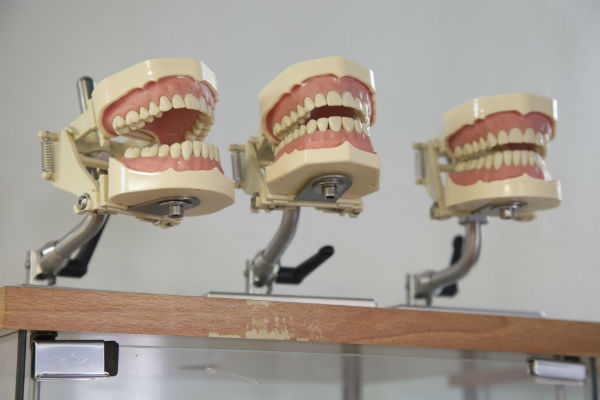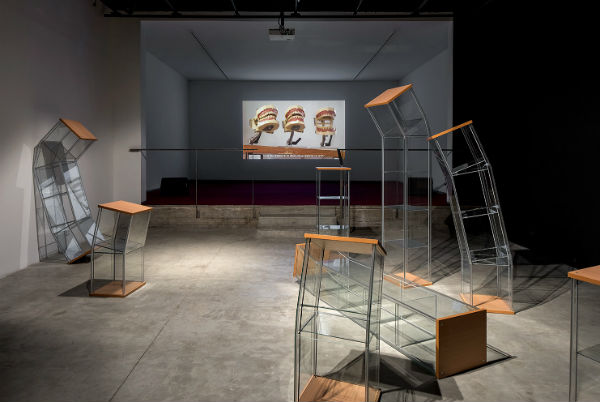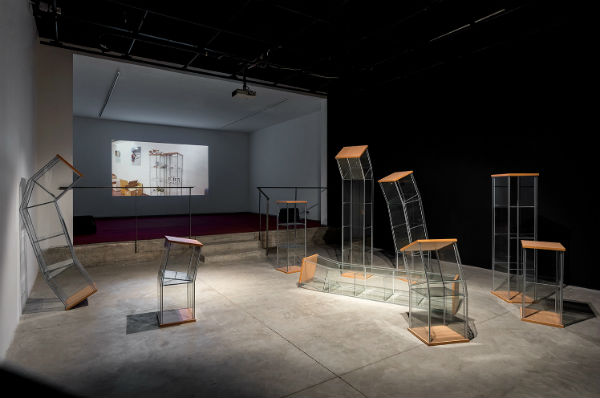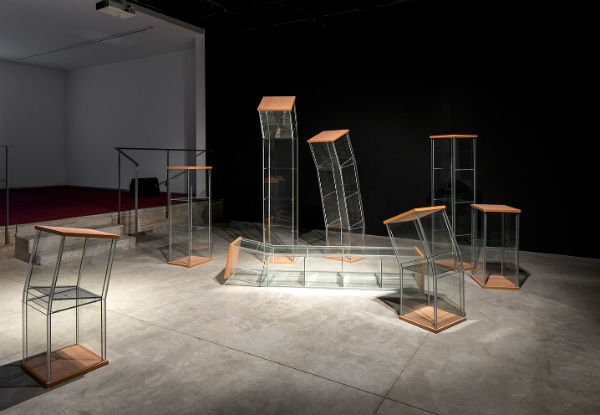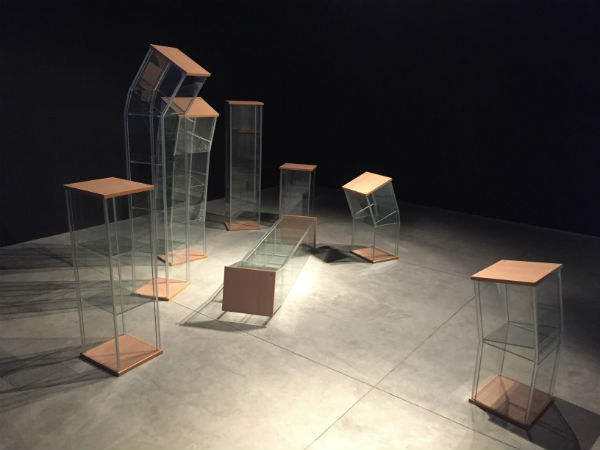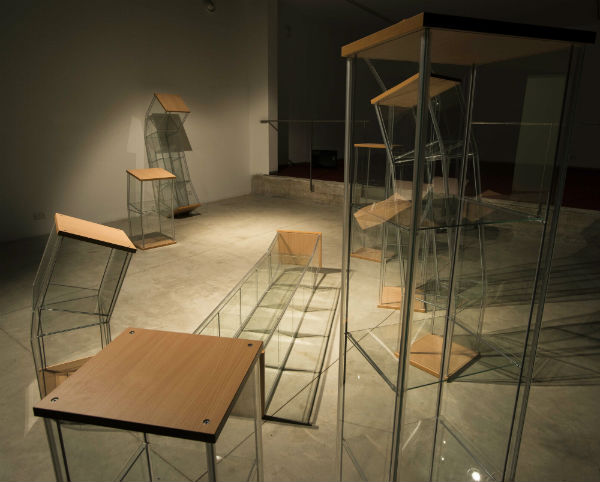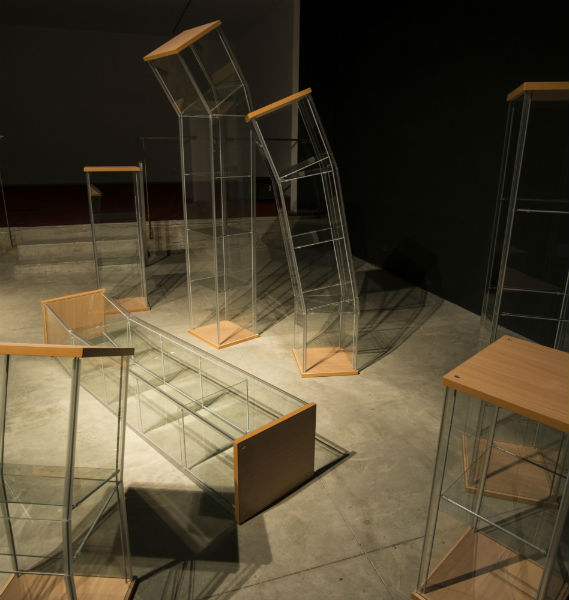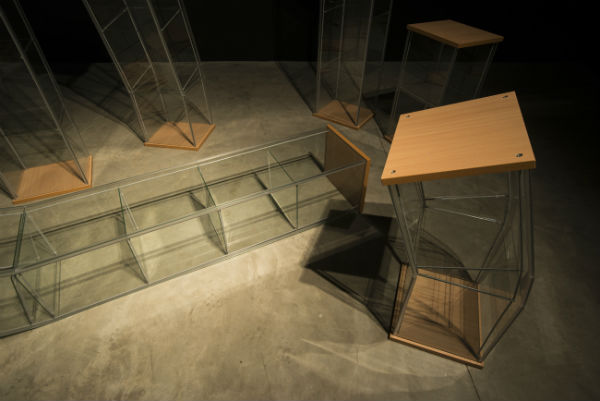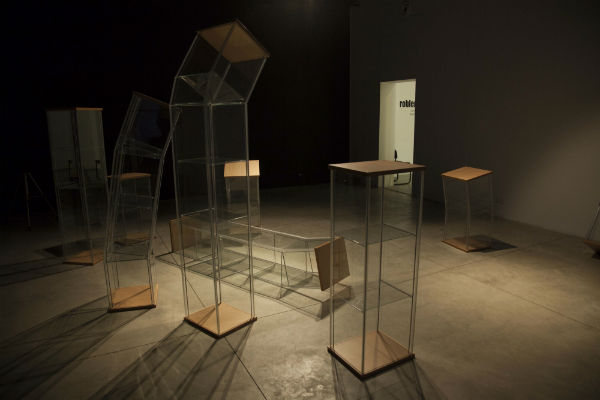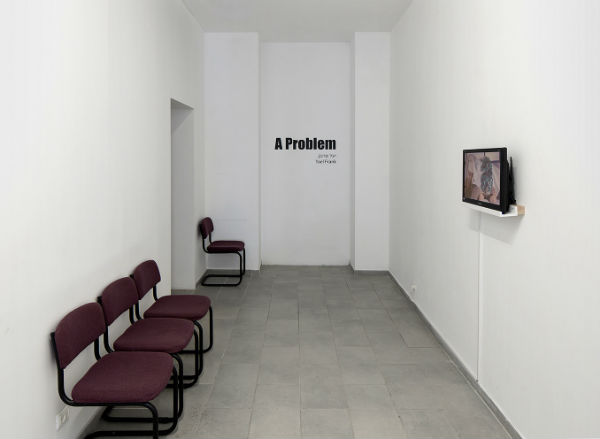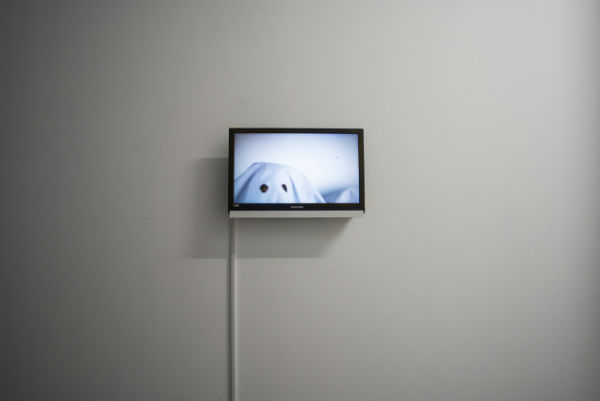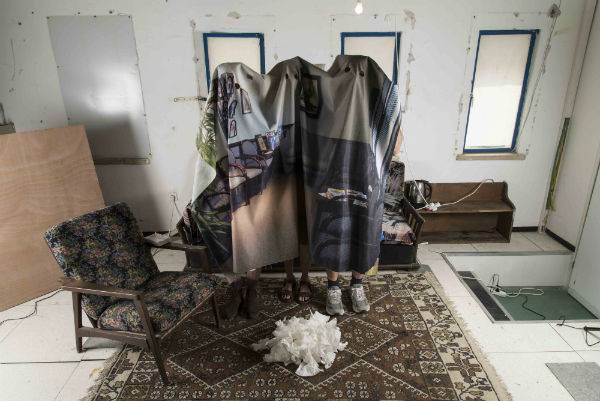Yael Frank
A Problem
Tel Aviv Artists' Studios
March 10 - 21 April 2018
“A Problem,” a solo show by Yael Frank, formulates a sharp exposition to what is known as the “death problem” – the haunting fact of the demise that awaits us, the most fateful eventuality in a person’s life and it’s only unshakable certainty. Death, after it has been secularized and cleansed of any spiritual, ritualistic and metaphysical connotations, has become, in modern societies, an unspeakable taboo, a private event that has no place in public life. However, death continues to resurface in the cultural baggage we carry, in the undying pathos of religious representations as in the imagery and vocabulary of pop culture; in the existential helplessness of the Theater of the Absurd as in the loss of a sense of self in digital culture.
Frank, who delivers a satirical and anti-heroic feat with regard to this hopeless problem, would rather look this meaninglessness straight in the eye, to strip death of the veils of loss and pathos that still shroud it, being as it is the product politicization. Turning death into a hackneyed, bothersome joke, she draws inspiration from a variety of sources, from Christian iconography and the plays of Brecht and Beckett to reality TV, animated cartoons and talk shows – blending ‘high’ and ‘low’ into an absurd display that tries to decipher the death phenomenon in our culture.
As in previous works of Frank’s, at the basis of this current exhibition is a strategy that deploys humor as a means of resistance, a tool for subverting conventions. In poking fun at them, humor exposes and undermines power mechanisms, political interests, knowledge hierarchies and historical constructs, deflating and divesting them from their vested authority while offering alternatives to beliefs that are widely held in the current socio-economic climate. Humor’s cathartic release does away with the propaganda aspect of ideological utterances, foregrounding issues that are unspoken and protected under a seal of authority and sanctity.
The three works in show lead the visitor through a surrealist, multi-focus environment, from one absurd scene to the next, progressing along structured architectonics that lays out the visitor’s itinerary in the space. Like three ‘tableaux’, they unfold a space both morbid and parodic, where inanimate objects come to life and entities return from the dead to inhabit the common spaces of the everyday. As a prologue, upon entering we encounter "Sad", a video that with sparse means gestures at the familiar genre of ghost movies, with their distinct paraphernalia of special effects and supernatural phenomena.
The video’s participants, dressed as ghosts, are all motionless, either seated or standing in a makeshift set meant to simulate a living room or a waiting hall. However, the cast of participants constantly changes: All while remaining perfectly still, some are added to the scene and others omitted from it, as if posing for a group photo about to be taken. In keeping with the most commonplace cliché of the genre, the sheets they wear are pierced around the eyes – stereotypical embodiments of ghosts that could have been sampled from an animated cartoon or a costume party.
And yet, unlike the worn-out convention of the white sheet to indicate spirits, here the fabric they wear is printed with photographs of different waiting halls. Frank’s camera hovers around on the scene, zooming its way in and out of the actual location and into to the rooms printed on the sheets, to the point that the ghosts begin to blend into the interior that surrounds them, “donning” as it were the actual architecture over their bodies. Using a cinematic trick as simplistic as it gets, Frank is able to make them appear and disappear, generating a spatial disorientation that suspends physical reality in favor of an elusive, supernatural one. This lends these spirits a trans-physical quality that places them in an alternative layer of reality – beings whose liminality embodies both a troubling absence and an ominous presence returning to haunt us in the spaces of the living.
Further on, from the other end of a corridor that leads to the main exhibition space, is a heart-rending yet minimalist-looking sculptural installation, “The
Last Hour of Cabinet I”, entirely made of aggregated "Detolf" glass cabinets from Ikea. Subjecting them to a range of manipulations – the cabinets were taken apart, bended, soldiered, re-assembled – Frank constructed a pathos-filled scene at the height of its drama: family members and friends surrounding their loved one in his final hour – a multi-participant composition that draws on the theme of the Dormition (the virgin Mary on her deathbed) in the iconography of Eastern Christianity.
The sheer redundancy of the anthropomorphic gesture at the basis of “The Last Hour of Cabinet I” spawns a comedic moment that empties the scene of its sacred pathos. Not only is a mass-produced, highly ubiquitous object being personified to represent a family in its charged moment of pain and grieving, this personification is directed at a momentous religious symbol of universal gravitas.
“A Problem,” the show’s eponymous video piece, is likewise based on the animation of still objects, something of a moppet show raised from the dead. Created in stop-motion technique, the work animates three jaw models placed on a glass cabinet in a shop for dental supplies. Projected to on the wall, they assume gigantic proportions, observing from up high the sculptural complex laid out below them. As a trio of dark oracles, their verbose, authoritative voices echo throughout the exhibition, delivering a pompous yet empty text, a sequence of clichés that could have been pieced together from any number of existing sources. The text they deliver revolves around some unnamed socio-political problem, using a hollow rhetoric meant to engage listeners and call them into action. Despite the uncompromising and resolute tone, the text is in fact hyperbolic, pointing to its own inherent absurdity.
While autonomous, the two works clearly complement one another: “The Last Hour of Cabinet I” appeals to emotions, while “A Problem,” with its intellectualized reasoning, appeals to logic and judgment. The space that unfolds between the two is hence an interpretative one, leaving the viewer with the freedom to decide what preceded what: Did the political crisis narrated by the jaws lead to the unique tragedy of the sculptural complex, or is it the other way around, with the mythic and universal codification of the pathos-filled scene lying at the root of the unending succession of humanitarian catastrophes that define humanity from its very beginnings? Either way, and despite the satirical presentation, each of them manages to validate its own narrative, absurd as it may be.
Sally Haftel Naveh | March 2018

